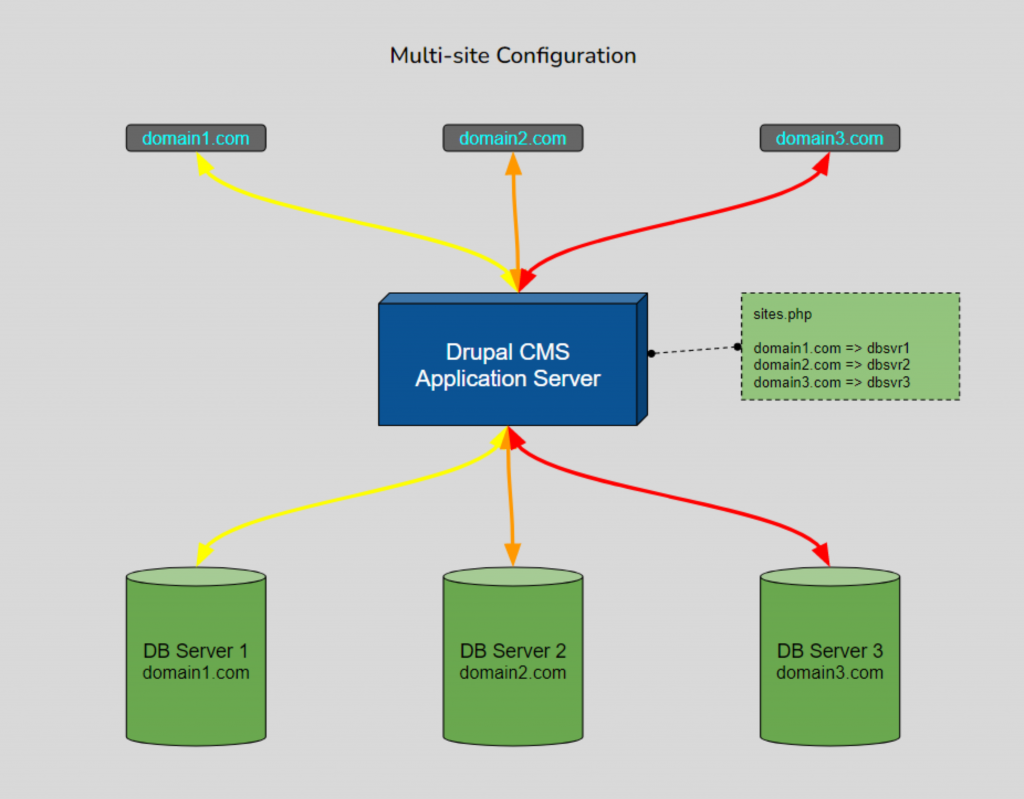Multi-domain vs Multi-Site
Drupal is a CMS backend framework that has been known for its flexibility when it comes to feature implementation. A single feature requirement can have different ways of implementation that ranges from the easiest to a very complex security driven application. You might have already heard about the ever popular multisite feature of Drupal which allows you to use a single codebase for multiple different sites. But did you know that there is another implementation that you might be looking for? Introducing Multi-Domain.
The difference between a multisite and a multidomain is not that much. Multisite is an implementation wherein you have a single codebase that connects to multiple different databases. This is commonly used in large scale applications that require different domains with their own database that serves a specific purpose but the codebase is the same. One advantage of this type of setup is that whenever a security patch is needed, it will only be applied once compared to having a different codebase for all your applications. It is recommended to prepare separate database servers for each of your applications which means this could increase cost. Although it’s not impossible to use one server that houses all your databases, there is not that much to be gained from this kind of setup. And that’s where the next type of configuration comes in handy.

A multidomain on the other hand is commonly used for smaller applications that need multiple domain names having almost identical purpose and content but have to be presented differently from each other. This is a much easier and cheaper approach compared to a multi-site configuration. In this setup, you can house your LAMP stack in one server that can serve different content for each domain depending on the requirements. One example is a ticketing website that caters to different travel service providers where they all need the same functionality but needs different theme for each of their individual sites..

Advantages and disadvantages
- Multisite
- Advantages
- Can handle large amounts of data
- Database maintenance can be segregated
- Other domains are not affected when one database server is down
- Applicable for large organizations
- Disadvantages
- Higher cost due the number of database servers
- A little complex configuration is required
- Needs a separate implementation for scenarios where 2 or more database need to have the same data
- Advantages
- Multidomain
- Advantages
- All contents and configuration are stored in the same database
- Simpler infrastructure requirement
- Easier to configure when using available modules
- Applicable for simple applications
- Disadvantages
- All domains can be affected when one failure from another domain affects the common parts
- Advantages









